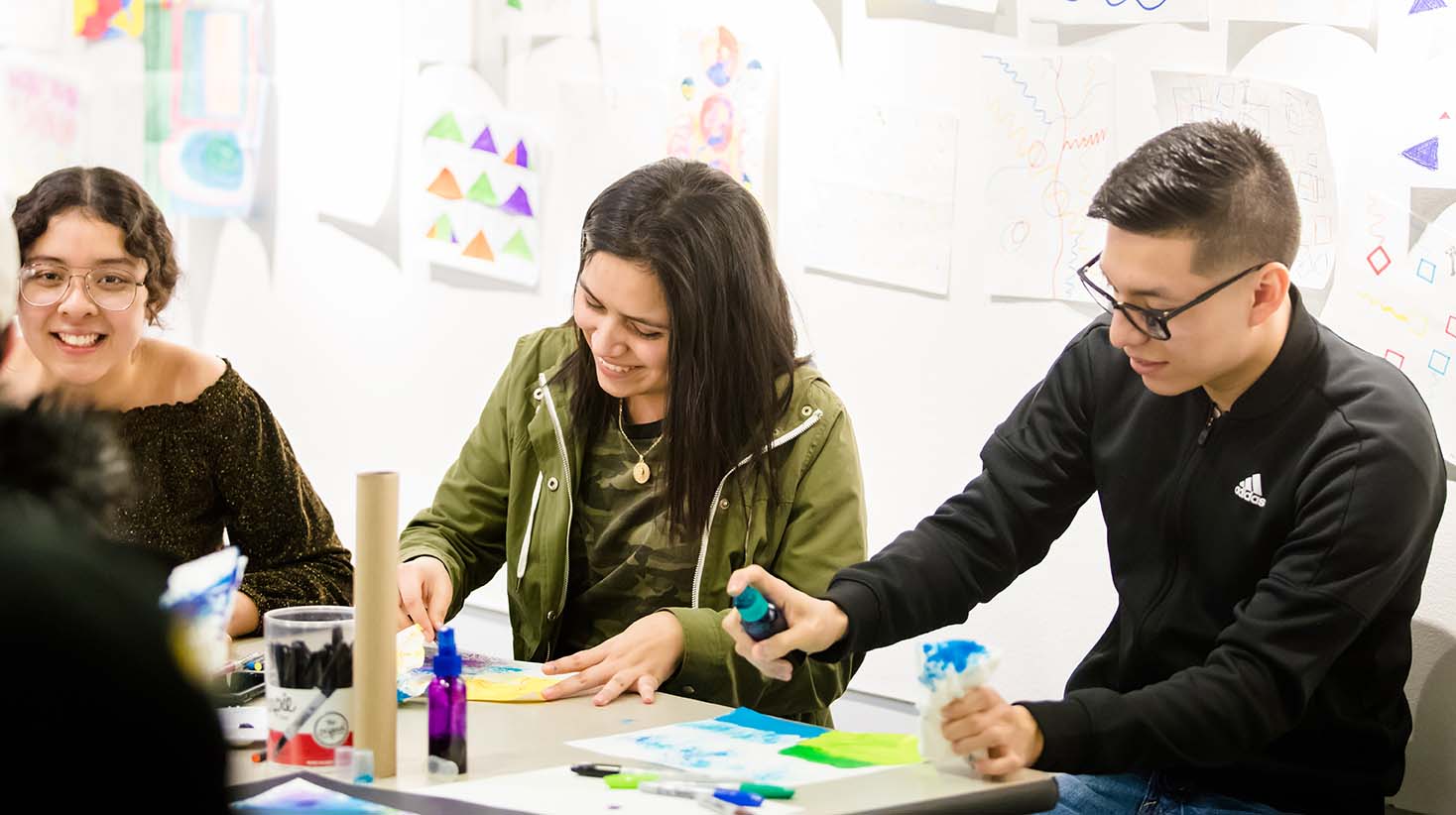Art with Impact Arrupe College
How art fosters education
By Maura Sullivan Hill
Susannah Strang might be the sole fine arts professor at Arrupe College, but she is making sure that creating art is part of the culture in Maguire Hall. Between the two art classes she teaches, the growing extracurricular opportunities, and the faculty in other departments integrating art and creativity into their classes, every student interacts with art during their time at Arrupe. To Strang, it is an essential part of the students’ experience.
“Arrupe is enormously rigorous, and to have the physical and bodily engagement and the sensory involvement of an art class—playing with color and the openness of experimentation—is rewarding in such different ways,” she says. “Everybody who is in undergraduate and graduate work knows that most learning happens from the neck up. Actually doing things with our bodies changes our experience of other stuff, as well. And I think [making art] just feels really good.”
All Arrupe students take an arts seminar as one of their graduation requirements, and last fall, Strang offered the first studio art class: 2-D Foundation Studio. She’ll teach the studio class again this summer, and an art club is in its early stages. For students at Arrupe, Loyola University Chicago’s two-year college, the practice of learning fine art alongside the sciences and humanities flows from the University’s Jesuit identity.
“Our curriculum has always included a fine arts course as part of the liberal arts core requirements, in keeping with a tradition of Jesuit education that dates back to 1599,” says Jennifer Boyle, Arrupe’s associate dean for academic affairs. “Professor Strang understands that art offerings are conducive to the active, culturally responsive, and collaborative learning environment we seek to create at Arrupe College.”
Sophomore Esther Sosa Alonso is one of the founding members of the art club at Arrupe. For her, making art is both a creative outlet and a stress reliever. “I want to do something with my hands and get creative,” she says. “Every day we are so used to being on our phones or being in the car, surrounded by things that have already been made for us, so I need an outlet.
“I was so oblivious to this—and the fact that people need it—before starting the art club.”
The turning point for Alonso was an event that Strang organized, an evening of art and meditation open to all students. As a student in Arrupe’s associate of arts in business administration program, Alonso says she is often in math classes, and that art is “a nice outlet that not only provides a de-stressor but also makes you think differently.” Strang has helped Alonso change her perception of what can be considered art by encouraging Alonso to enter photos shot on her iPhone in the annual Arrupe student art show.
Strang’s art and visual culture class, the required art course, combines art history with opportunities to create through drawing and photography. Students in Strang’s 2-D Foundation Studio class went beyond the introduction provided in her seminar, learning about a variety of artistic mediums: drawing with pencils, charcoal, oil pastels, and chalk pastels; printmaking; photography; and principles of graphic design.
Freshman Lily Trevino hadn’t taken many art classes in high school and wasn’t even sure what the phrase “2-D foundations” meant when she was placed in Strang’s class, but she was open to learning more about art. Throughout the class, she found that art gave her an avenue to express herself, whether through a self-portrait assignment or her final project on immigration.
“Because immigration is a huge topic that should not be taken lightly, I felt like I could express that in my art,” Trevino says. “I drew the United States flag with different collage pictures representing the issue: Republicans and Democrats, the Mexican flag. I did a border, with images to defend DACA and not separate families.”
This type of project fits perfectly with Strang’s goal as a teacher, which is to empower her students as creators.
“The umbrella idea for the class is, ‘How do you get your visual work to say something that you want to say, in the way that you want to say it?’” Strang explains. “(It is) feeling confident that the thing in your head translates in the art and means something to someone else. As an artist, you want to feel like you have a degree of control over what is being communicated.”
While students praise her approach, Strang is quick to compliment her fellow faculty members for integrating art and creativity across disciplines at Arrupe. One of the pieces in this year’s student art show, for example, was initially created as a theology assignment.
“A number of my colleagues are finding interesting ways to bring active creativity into the classroom,” says Strang. “Students are getting [art] experiences beyond the studio classes, for sure.”





